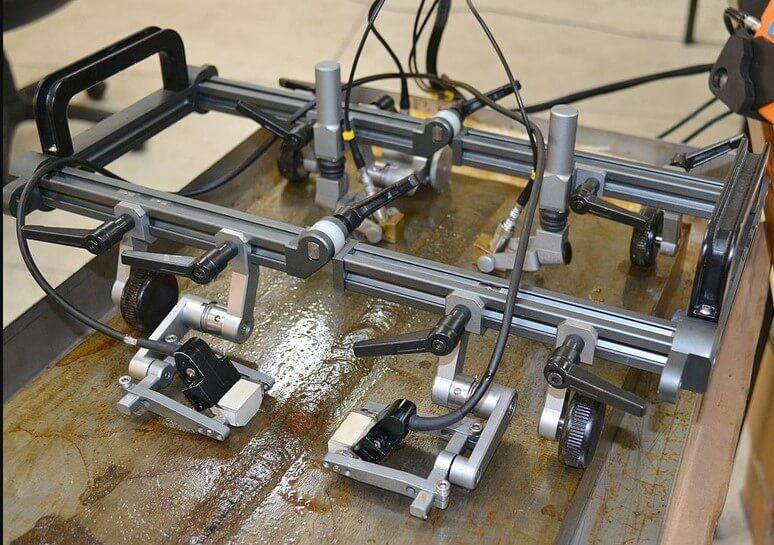
The Time of Flight Diffraction (TOFD) technique is one of the most reliable non-destructive testing methods in testing welds of both in-service and pre-service. It is a powerful technique because it can simultaneously detect and size defects. TOFD inspection employs two longitudinal wave (L-wave) angle beam transducers arranged symmetrically opposite facing each other, straddling the weld or base material under test.Â
One probe acts like a transmitter of ultrasonic energy while the other probe receives the ultrasound energy. If there is a flaw, such as crack, there is a diffraction of the ultrasound pulse from the tips of the crack. By measuring the time of flight of the pulse, the depth of the crack can be calculated by trigonometry. Time of Flight Diffraction is now routinely used in a wide range of applications such as inspection of piping and pressure vessels.
TOFD Technique can provide
- Flaw locations along the weld
- Position of flaws (depth) with respect to scanning surface
- Good Sensitivity to all weld flaw types including cracks, slag and lack of fusion
- Accurate sizing of defects
TOFD is often used in addition with other non-destructive testing methods such as Phased Array ultrasonic Testing.
